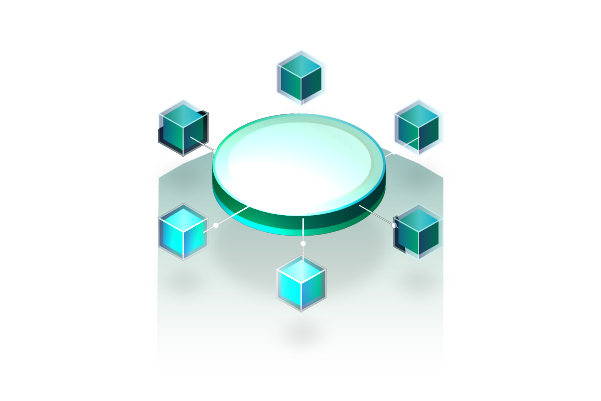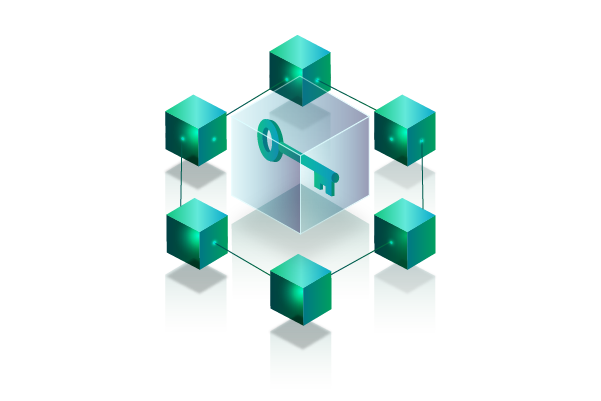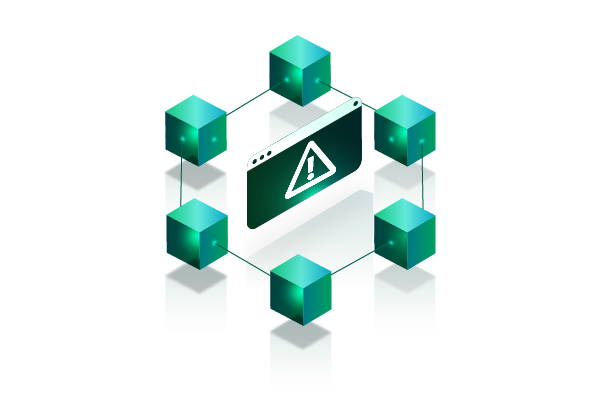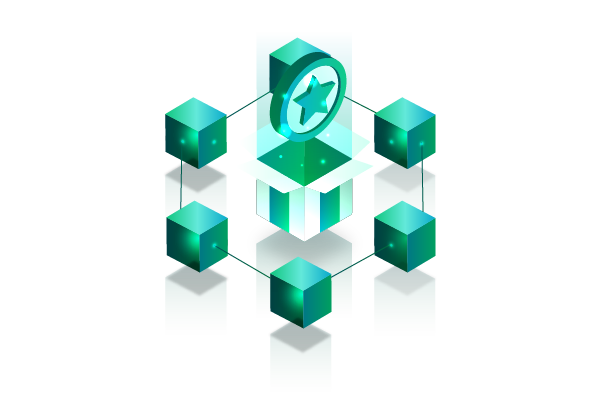In the rapidly evolving world of technology, decentralized applications, or Dapps, are emerging as a transformative force. Unlike traditional applications, Dapps operate on decentralized networks, offering a new paradigm of transparency, security, and user control. As blockchain technology continues to mature, Dapps are becoming more prevalent, reshaping how we interact with digital services.
The concept of decentralization is not entirely new, but its application in the realm of digital services represents a significant shift. Traditional apps rely on centralized servers controlled by a single entity, which can be vulnerable to hacking, censorship, and data breaches. Dapps, on the other hand, leverage blockchain technology to distribute data across multiple nodes, reducing these risks and providing a more resilient infrastructure.
Understanding Dapps is crucial for anyone interested in the future of technology and digital services. This article delves into what decentralized applications are, their key features, and the benefits they offer. We will also explore popular examples, discuss the challenges they face, and look at what the future holds for these innovative applications.
What Are Decentralized Applications (Dapps)?

Decentralized applications, or Dapps, are software applications that run on decentralized networks rather than centralized servers. They are typically built on blockchain technology, which ensures that data is distributed across multiple nodes, making the application more secure and resilient. Unlike traditional apps, Dapps operate without a central authority, providing users with greater control and transparency.
Also Read: 12 Best Solana Wallets to Consider in 2024
Dapps leverage the principles of blockchain to function. They use smart contracts, which are self-executing contracts with the terms of the agreement directly written into code. These smart contracts are stored on the blockchain and automatically execute transactions when certain conditions are met. This eliminates the need for intermediaries, reducing the potential for fraud and ensuring that transactions are transparent and immutable.
One of the primary characteristics of Dapps is their open-source nature. The source code of a Dapp is often available to the public, allowing anyone to inspect, modify, and distribute the software. This openness fosters a collaborative environment where developers can contribute to and improve the application. Moreover, the decentralized nature of Dapps ensures that they are not subject to the same vulnerabilities as traditional apps, such as single points of failure and centralized control.
Key Features of Decentralized Applications

Decentralized applications (Dapps) offer a range of features that set them apart from traditional applications. These key features are integral to their functionality and contribute to their growing popularity in various industries.
Transparency
One of the most significant features of Dapps is transparency. Since Dapps are built on blockchain technology, all transactions and changes are recorded on a public ledger. This means that anyone can view the transaction history and verify the authenticity of the data. Transparency enhances trust among users, as they can independently confirm the integrity of the application and its operations.
Security
Dapps provide enhanced security compared to traditional applications. The decentralized nature of blockchain technology means that data is distributed across multiple nodes, making it extremely difficult for hackers to compromise the system. Additionally, smart contracts, which are central to Dapps, execute automatically based on predefined rules, reducing the risk of human error and fraud. This robust security framework ensures that user data and transactions remain safe from malicious attacks.
User Control
Dapps empower users by giving them greater control over their data and interactions. In traditional applications, a central authority typically holds and manages user data, which can be prone to misuse or unauthorized access. In contrast, Dapps allow users to own and manage their data directly. Users can interact with the application without relying on intermediaries, ensuring that their privacy is maintained and their personal information is not exploited.
Decentralization
The core principle of Dapps is decentralization. Unlike traditional applications that operate on centralized servers, Dapps run on a decentralized network of nodes. This architecture eliminates single points of failure, making the application more resilient to outages and attacks. Decentralization also promotes a more democratic and fair system, where no single entity has control over the entire network. This distributed approach enhances the overall reliability and trustworthiness of the application.
Benefits of Using Dapps
Decentralized applications (Dapps) offer numerous benefits that make them an attractive alternative to traditional applications. These benefits are driving the adoption of Dapps across various sectors and are central to their growing popularity.
Enhanced Privacy
Dapps provide enhanced privacy by allowing users to interact with applications without the need for intermediaries. Traditional applications often require users to share personal information with a central authority, which can be vulnerable to misuse and data breaches. In contrast, Dapps enable users to maintain control over their personal data, ensuring that it is not exposed to unauthorized parties. This increased privacy is particularly important in industries where sensitive information is involved, such as finance and healthcare.
Reduced Costs
By eliminating intermediaries, Dapps can significantly reduce costs associated with transactions and operations. Traditional applications often rely on third parties, such as payment processors and data storage providers, which can introduce additional fees and delays. Dapps, powered by blockchain technology and smart contracts, automate processes and transactions, reducing the need for manual intervention and associated costs. This efficiency makes Dapps an attractive option for businesses looking to streamline their operations and reduce expenses.
Increased Trust
Trust is a crucial factor in the adoption of any technology, and Dapps excel in this area. The transparency and immutability of blockchain technology ensure that all transactions and changes are recorded on a public ledger, making it easy to verify their authenticity. Users can trust that the data is accurate and that the application operates as intended. This increased trust is particularly valuable in industries where transparency and accountability are essential, such as supply chain management and voting systems.
Censorship Resistance
Dapps offer a high degree of censorship resistance due to their decentralized nature. Traditional applications can be subject to censorship by governments or other central authorities, restricting access to information and services. Dapps, however, operate on a decentralized network, making it much more difficult for any single entity to control or restrict access. This resistance to censorship ensures that users can freely access and use the application, regardless of external pressures.
Popular Examples of Decentralized Applications

Decentralized applications (Dapps) have found applications in various sectors, showcasing their versatility and potential. Here are some popular examples across different industries.
Finance Dapps
Finance Dapps, often referred to as DeFi (Decentralized Finance) applications, have revolutionized the financial sector. These Dapps offer services such as lending, borrowing, trading, and earning interest on cryptocurrencies without relying on traditional financial institutions. Examples include:
- Uniswap: A decentralized exchange (DEX) that allows users to trade cryptocurrencies directly from their wallets.
- Aave: A DeFi protocol that enables users to lend and borrow cryptocurrencies with variable and stable interest rates.
- Compound: A decentralized money market protocol where users can earn interest on deposits and borrow against their crypto assets.
Gaming Dapps
Gaming Dapps leverage blockchain technology to provide players with true ownership of in-game assets, secure transactions, and decentralized game mechanics. These features have created new opportunities for players and developers alike. Examples include:
- CryptoKitties: One of the first blockchain games, where players can collect, breed, and trade virtual cats.
- Axie Infinity: A popular game that combines elements of traditional gaming with blockchain-based ownership, allowing players to earn cryptocurrency through gameplay.
- Decentraland: A virtual world where users can buy, develop, and trade virtual land and assets using blockchain technology.
Social Media Dapps
Social media Dapps aim to provide a more transparent, secure, and user-controlled alternative to traditional social media platforms. These Dapps prioritize user privacy and data ownership. Examples include:
- Steemit: A blockchain-based social media platform where users can earn cryptocurrency rewards for creating and curating content.
- Mastodon: A decentralized social network that offers a federated model, giving users control over their data and communities.
- Peepeth: A blockchain-based social network focused on ethical behavior and positive contributions.
Supply Chain Dapps
Supply chain Dapps enhance transparency, traceability, and efficiency in supply chain management. By recording every transaction and movement on the blockchain, these Dapps ensure the integrity and authenticity of products. Examples include:
- VeChain: A blockchain platform designed to improve supply chain management and business processes, providing product lifecycle information and anti-counterfeiting measures.
- IBM Food Trust: A blockchain solution that increases transparency and traceability in the food supply chain, helping to ensure food safety and reduce waste.
- Provenance: A Dapp that tracks the journey of products through the supply chain, from origin to consumer, ensuring ethical sourcing and transparency.
Challenges and Limitations of Dapps

While decentralized applications (Dapps) offer numerous advantages, they also face several challenges and limitations that can hinder their adoption and functionality. Understanding these challenges is crucial for developers and users alike.
Scalability Issues
One of the primary challenges facing Dapps is scalability. Blockchain networks, especially those like Ethereum, which many Dapps rely on, often struggle to handle a large number of transactions simultaneously. This limitation can lead to slower transaction times and higher fees during periods of high demand. Solutions like layer 2 scaling and the development of more scalable blockchain protocols are being explored, but scalability remains a significant hurdle for widespread Dapp adoption.
User Adoption
User adoption is another critical challenge for Dapps. Many users are accustomed to the simplicity and convenience of traditional applications and may find Dapps complex or difficult to use. The requirement to manage private keys and understand blockchain concepts can be a barrier for non-technical users. Additionally, the user interfaces of many Dapps are not as polished as those of their centralized counterparts, which can deter potential users.
Regulatory Concerns
The regulatory environment surrounding Dapps and blockchain technology is still evolving. In many jurisdictions, there is uncertainty about how existing laws apply to Dapps, and new regulations are being developed to address these emerging technologies. This regulatory uncertainty can create challenges for developers and users, as they must navigate a complex and changing legal landscape. Issues such as compliance, data privacy, and financial regulations are particularly pertinent.
Also Read: Understanding InterPlanetary File System
Technical Complexity
Developing and maintaining Dapps is inherently more complex than traditional applications. Blockchain development requires specialized knowledge and skills, which can be a barrier for many developers. Furthermore, smart contracts must be carefully coded and audited to ensure they are secure and free of vulnerabilities. A single error in a smart contract can lead to significant financial losses or security breaches, highlighting the importance of rigorous testing and quality assurance.
Conclusion
Decentralized applications (Dapps) represent a groundbreaking shift in the way we interact with digital services. By leveraging the power of blockchain technology, Dapps offer enhanced security, transparency, and user control compared to traditional applications. These attributes make Dapps particularly appealing in industries where trust, privacy, and data integrity are paramount.
The benefits of using Dapps are numerous. Enhanced privacy ensures that users maintain control over their personal data, while reduced costs and increased trust create a more efficient and reliable digital ecosystem. The ability to resist censorship further underscores the value of Dapps in promoting free and open access to information and services. As we have seen, Dapps are already making significant inroads in finance, gaming, social media, and supply chain management, demonstrating their versatility and potential.
However, the journey of Dapps is not without challenges. Scalability issues, user adoption barriers, regulatory concerns, and technical complexities are hurdles that need to be addressed. Despite these challenges, the future of Dapps looks promising. Continued advancements in blockchain technology, integration with emerging technologies, increased mainstream acceptance, and enhanced interoperability will drive the growth and evolution of decentralized applications.
In conclusion, Dapps are poised to play a pivotal role in the future of digital technology. As we continue to explore and innovate, the impact of Dapps will likely extend far beyond the sectors currently utilizing them, transforming the way we think about and interact with the digital world. Embracing the potential of Dapps can lead to more secure, transparent, and user-centric applications, paving the way for a decentralized future.
Disclaimer: The information provided by HeLa Labs in this article is intended for general informational purposes and does not reflect the company’s opinion. It is not intended as investment advice or recommendations. Readers are strongly advised to conduct their own thorough research and consult with a qualified financial advisor before making any financial decisions.

Joshua Soriano
I am a writer specializing in decentralized systems, digital assets, and Web3 innovation. I develop research-driven explainers, case studies, and thought leadership that connect blockchain infrastructure, smart contract design, and tokenization models to real-world outcomes.
My work focuses on translating complex technical concepts into clear, actionable narratives for builders, businesses, and investors, highlighting transparency, security, and operational efficiency. Each piece blends primary-source research, protocol documentation, and practitioner insights to surface what matters for adoption and risk reduction, helping teams make informed decisions with precise, accessible content.
- Joshua Soriano#molongui-disabled-link
- Joshua Soriano#molongui-disabled-link
- Joshua Soriano#molongui-disabled-link
- Joshua Soriano#molongui-disabled-link

